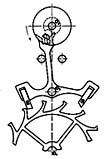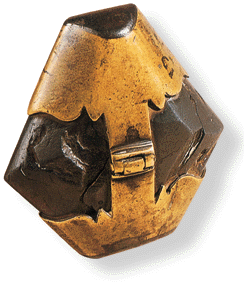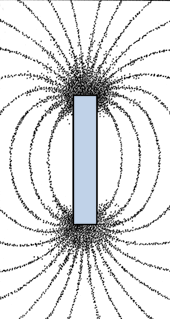
 PRECISION WATCH REPAIR BY CHARLIE SQUIRES
PRECISION WATCH REPAIR BY CHARLIE SQUIRES
| Question:
Does temperature affect watches and if so, how is it compensated for? Ribella Hortensia, Spain Answer by Professor J.C. Nicolet Huygens and Harrison Changes in temperature do affect the operation of timekeepers, but this phenomenon was not observed in the early history of watch development because imperfections in design caused variations much greater than perturbations due to temperature fluctuations. In 1675, the Dutch scholar Christian Huygens had the idea of fixing a flat balance spring to the balance in the watch in order to regulate its operation. This important innovation marked the beginning of modern watchmaking. The use of Huygens' balance spring resulted in a ten-fold gain in precision over other watches, which in physics, corresponds to a very considerable improvement. To give an example, the first watches to be equipped with a balance spring showed errors of 4 to 5 minutes per day while those without it varied 40 to 50 minutes per day. The secretary of the Royal Society of London, a man named Oldenburg who was also a friend of Huygens wrote to the Dutchman: "Here at the Royal Society, we don't doubt that temperature has an important effect on the balance spring but we feel that you must have taken this effect into consideration." Writing about his experiments, Huygens answered him on May 1, 1675: "I have not found that heating the balance spring in a flame produces any slower vibrations than when it is cold." But, Huygens was wrong. Improvements in watch design soon revealed that temperature does play a role in the elasticity of the balance spring, thus resulting in variations in time. It wasn't until 1714, however, that an approximate solution to this problem was found.
John Harrison (1693-1776) was the first watchmaker to construct a chronometer sufficiently precise to determine the longitude while on the high seas. His Number 4 watch, which won a £20,000 prize offered by the British Parliament, was equipped with a device to correct for temperature fluctuations. This mechanism was made of a bimetallic strip acting on the length of the balance spring to automatically shorten or lengthen it as a function of temperature change. Although this particular arrangement was cumbersome and non-adjustable, it was very useful. After 156 days at sea and taking into account the known daily variation of the watch, Harrison's Number 4 lost only 15 seconds, representing an error of less than 5 kilometers at the latitude of London. Harrison began his research in 1726 at the age of 33 years. In 1764, he was awarded half the prize money for his invention but had to wait until 1772, four years before his death to receive the other half. It seems that Ye Olde England was not terribly benevolent towards its own progeny.
Effects of temperature Temperature variations produce a number of effects on watches. The main one is the loss of elasticity in the spiral when it is made of steel, for which a loss of about 11 seconds per degree Celsius per day (6.1 s/oF/day) is observed as the temperature increases. The expansion of the balance and the lengthening of the balance spring also produce a small loss which is compensated for by increasing the thickness and height of the balance spring. The non-linear variation of the viscosity of lubricating oils as a function of temperature exerts a non-quantifiable influence which is generally very weak within the normal limits of watch wear. Thermal compensation Thermal compensation is any process used to compensate or eliminate the effects of temperature on the operation of watch movements.
Pierre Le Roy (1717-1785), one of the founders of French chronometry, was the first to develop a thermal compensation technique using the balance rather than the balance spring technique of Harrison. The result was a semicircular bimetallic balance in two parts whose outer rim was made of brass and inner rim made of steel, both equipped with a screw to permit any necessary modification . As the temperature rises, the brass expands more than the steel which causes the rim to tighten. The moment of inertia of the balance decreases and the watch advances thus compensating for the loss produced by the balance spring. This completely adjustable system was very efficient and easily manageable. During the 19th Century, all watches with thermal compensation were equipped with bimetallic balances.
Charles Edouard Guillaume The best solution for the problem of temperature variations was found by Charles Edouard Guillaume (1861-1938) from Fleurier, Switzerland.Guillaume was the Director of the International Bureau of Weights and Measures in Sèvres, France and was studying the properties of nickel steel alloys with the objective of making a temperature-insensitive standard measure for the length of the meter. In 1897 he created a material whose expansion coefficient was practically zero over a large range of normal temperatures. Guillaume called this new iron-nickel alloy INVAR. It worked quite well for the Bureau's standard meter measure and, in addition, found applications in clockmaking where the pendulum rod needed to maintain the same length regardless of temperature. Before this invention, clocks used for "high" precision had to be equipped with some other kind of expansion-compensating device since an increase in length due to the warming of steel rods produced a loss of 0.5 second per degree Celsius per day (0.28 s/oF/day). Encouraged by the successful use of INVAR in clocks, watchmakers decided to use it to replace the normal traditional steel balances.
At the beginning of the 20th century, INVAR balance springs provided a reasonable solution to the problem of thermal changes on watches. But it took another two decades of work to perfect the system. In 1912, a new alloy of 29% nickel was developed but had the major drawbacks of being too soft and difficult to work with. Finally in the early 1920s, Guillaume, in collaboration with Chenevard and the Imphy steel laboratory, developed a product called ELINVAR (ELasticité Invariable). The balance springs made of this new alloy were called "auto-compensating balance springs". They quickly replaced their steel counterparts and had the added advantage of eliminating the two-piece bimetallic balances. In addition, ELINVAR was less susceptible to the effects of magnetism and oxidation, thus greatly improving the £ quality of watches in these areas as well. For his work, Charles Edouard Guillaume received the Nobel Prize in physics in 1920, one year earlier than Einstein. |
||||||||||
| Question:
Recently my watch began reading time in a most bizarre way. Someone told me it might be magnetized. What does this mean and how could it have happened? Oscar Peterson, Oxford, England
Answer by Professor J.C. Nicolet A bit of history The phenomenon of magnetism was first observed by the Greeks about 600 B.C. The natural magnet Fe3O4 (a black ferrous oxide), called magnetite was found in the province of Magnesia in Turkey. Around the 3rd Century A.D., the Chinese used magnetic material found in nature to make their compasses so necessary in navigating the high seas. In 1600, William Gilbert, physician to England's Queen Elizabeth I, published a treatise called "De Magnete" which theorized that the earth was one gigantic magnet, thus explaining variations in the movement of needles that had been magnetized.
Artificial magnetism Magnetic fields produced by natural magnets are too weak to disturb the operation of a watch. The same is not true, however, of man-made magnetic fields. In the early 19th Century, when scientists discovered how to produce very large electric currents, strong magnetic fields appeared by electromagnetic inductance. This important physical phenomenon was discovered in 1831 by Faraday, and began the development of important practical applications of electricity, i.e. electric motors, current generators, telegraph, telephone, radios, etc. In 1872, Siemens produced the first really efficient electric motors, and over the next 30 years, these new inventions quickly found their way into small workshops wherever electricity was available. By the end of the 19th Century, the widespread use of electric motors brought with it the widespread magnetization of pocket watches. The first "victims" of this artificial magnetism were people employed in factories using electricity. The early current generators caused the formation of strong magnetic fields which had a negative effect on any watches worn in the workplace. A solution to this problem arrived in the form of an apparatus composed of a horseshoe-shaped magnet that could be turned by means of a crank. At each half-turn, the polarity of the magnetism at any given point changed direction. By alternatively moving the magnetized object towards the horseshoe and then away from it, the article could be demagnetized. (This same principle is used today except that the horseshoe has been replaced by a powerful coil connected to an alternating current.)
Early preventive measures In the 19th Century, the regulating organs of watches were made essentially of steel thus making them highly susceptible to the effects of magnetic fields. The first measures to prevent this problem consisted of placing pocket watches in empty waxed white iron boxes which conducted the magnetic forces. While these waxed boxes were very efficient in protecting the watches, their main drawback was that they had to be opened to tell the time. The first quarter of the 20th Century brought about significant changes in this domain. The 1920 Nobel prize winner, Charles-Edouard Guillaume of Fleurier, Switzerland invented a nickel-iron alloy which replaced the earlier steel alloy in making balance springs. This greatly improved the reliability of watches for three reasons: · They were less sensitive to magnetism. · They were less sensitive to rust due to humidity. · They were less sensitive to thermal changes (which was the principal aim of Guillaume's research). With this alloy and the invention of stainless steel used in making cases, watches were no longer susceptible to the effects of magnetism in the home or in normal industrial workplaces. And gold? Unlike their steel cousins, watch cases made from gold do not protect the watch from the effects of magnetism. It is therefore advisable to equip the movements of these timekeepers with a para-magnetic screen made of iron, mu-metal or permalloy. This precaution is usually not taken for esthetic reasons. A gold watch with a protective screen is not very elegant, making it more difficult to sell. Perhaps one day, manufacturers will look more closely at this problem. In the meantime, wearers of gold watches should be careful not to expose their timepieces to magnetic fields. Magnetic fields in the home So where are the risks of these forces in the home? Non-negligible magnetic fields are found near loudspeakers, stereo systems, televisions and radios. Therefore, one should avoid setting a gold watch on top of any of these items. Less obvious, but posing an even greater danger for a gold watch are the magnets found in refrigerator doors or other cabinets. Even a brief contact with these items is enough to magnetize a gold watch. Caution is the byword when wearing one of these timekeepers in the kitchen. Although a magnetized watch can be demagnetized as mentioned above, the procedure is tedious. To do a good job, the watch must be dismantled and each steel part demagnetized separately. |
||||||||||
 0
0




